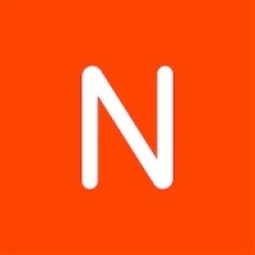Customer Company Size
Mid-size Company
Region
- America
Country
- United States
Product
- NAVEX Global’s hotline
- EthicsPoint case management software
Tech Stack
- Case management software
Implementation Scale
- Enterprise-wide Deployment
Impact Metrics
- Productivity Improvements
- Employee Satisfaction
Technology Category
- Application Infrastructure & Middleware - API Integration & Management
Applicable Industries
- Food & Beverage
Applicable Functions
- Human Resources
- Business Operation
Use Cases
- Regulatory Compliance Monitoring
- Remote Collaboration
Services
- System Integration
About The Customer
Rubio’s Fresh Mexican Grill is a restaurant chain that was born from a group of friends camping on the beach and basking in the sun at San Felipe. After first tasting a fish taco in San Felipe, Mexico, Ralph Rubio returned to San Diego to hand-craft his own recipe and introduced America to the fish taco. Since 1983, Rubio’s has served delicious fish tacos and fresh Mexican food for customers. Rubio’s Restaurants has grown to 200 locations more than 3,250 employees across the Southwest. The company’s commitment to its employees led Rubio’s to expand its partnership with NAVEX Global to strengthen its culture of ethics, integrity, and good ideas.
The Challenge
Rubio’s, a restaurant chain with over 200 locations and 3,250 employees, wanted to increase its understanding of the risks it faced. The company was particularly interested in improving the way employees communicate their concerns to management. Rubio’s already used NAVEX Global’s hotline to meet federal whistleblowing standards, but it was intended only for reporting major ethical issues. The company wanted to expand the use of the hotline as a comprehensive communication tool for reporting anything that might compromise the wellbeing of employees and other stakeholders. This would provide greater insight into potential financial misconduct and other risk issues.
The Solution
Rubio’s decided to expand its use of NAVEX Global’s hotline and EthicsPoint case management software. The hotline was promoted as an employee feedback tool, and calls started to come in. Both the People’s Services and Internal Audit departments use NAVEX Global’s case management software to handle cases. The structured, centralized database increases efficiency. Every detail of the report is documented, from the issue to the follow-up and resolution. This saves time and increases speed. The reporting system gives employees more confidence that Rubio’s is acting in their best interest, and it adds a new level of transparency to what the organization is doing.
Operational Impact

Case Study missing?
Start adding your own!
Register with your work email and create a new case study profile for your business.
Related Case Studies.

Case Study
The Kellogg Company
Kellogg keeps a close eye on its trade spend, analyzing large volumes of data and running complex simulations to predict which promotional activities will be the most effective. Kellogg needed to decrease the trade spend but its traditional relational database on premises could not keep up with the pace of demand.

Case Study
HEINEKEN Uses the Cloud to Reach 10.5 Million Consumers
For 2012 campaign, the Bond promotion, it planned to launch the campaign at the same time everywhere on the planet. That created unprecedented challenges for HEINEKEN—nowhere more so than in its technology operation. The primary digital content for the campaign was a 100-megabyte movie that had to play flawlessly for millions of viewers worldwide. After all, Bond never fails. No one was going to tolerate a technology failure that might bruise his brand.Previously, HEINEKEN had supported digital media at its outsourced datacenter. But that datacenter lacked the computing resources HEINEKEN needed, and building them—especially to support peak traffic that would total millions of simultaneous hits—would have been both time-consuming and expensive. Nor would it have provided the geographic reach that HEINEKEN needed to minimize latency worldwide.

Case Study
Energy Management System at Sugar Industry
The company wanted to use the information from the system to claim under the renewable energy certificate scheme. The benefit to the company under the renewable energy certificates is Rs 75 million a year. To enable the above, an end-to-end solution for load monitoring, consumption monitoring, online data monitoring, automatic meter data acquisition which can be exported to SAP and other applications is required.

Case Study
Coca Cola Swaziland Conco Case Study
Coco Cola Swaziland, South Africa would like to find a solution that would enable the following results: - Reduce energy consumption by 20% in one year. - Formulate a series of strategic initiatives that would enlist the commitment of corporate management and create employee awareness while helping meet departmental targets and investing in tools that assist with energy management. - Formulate a series of tactical initiatives that would optimize energy usage on the shop floor. These would include charging forklifts and running cold rooms only during off-peak periods, running the dust extractors only during working hours and basing lights and air-conditioning on someone’s presence. - Increase visibility into the factory and other processes. - Enable limited, non-intrusive control functions for certain processes.

Case Study
Temperature Monitoring for Restaurant Food Storage
When it came to implementing a solution, Mr. Nesbitt had an idea of what functionality that he wanted. Although not mandated by Health Canada, Mr. Nesbitt wanted to ensure quality control issues met the highest possible standards as part of his commitment to top-of-class food services. This wish list included an easy-to use temperature-monitoring system that could provide a visible display of the temperatures of all of his refrigerators and freezers, including historical information so that he could review the performance of his equipment. It also had to provide alert notification (but email alerts and SMS text message alerts) to alert key staff in the event that a cooling system was exceeding pre-set warning limits.

Case Study
Coca-Cola Refreshments, U.S.
Coca-Cola Refreshments owns and manages Coca-Cola branded refrigerators in retail establishments. Legacy systems were used to locate equipment information by logging onto multiple servers which took up to 8 hours to update information on 30-40 units. The company had no overall visibility into equipment status or maintenance history.







